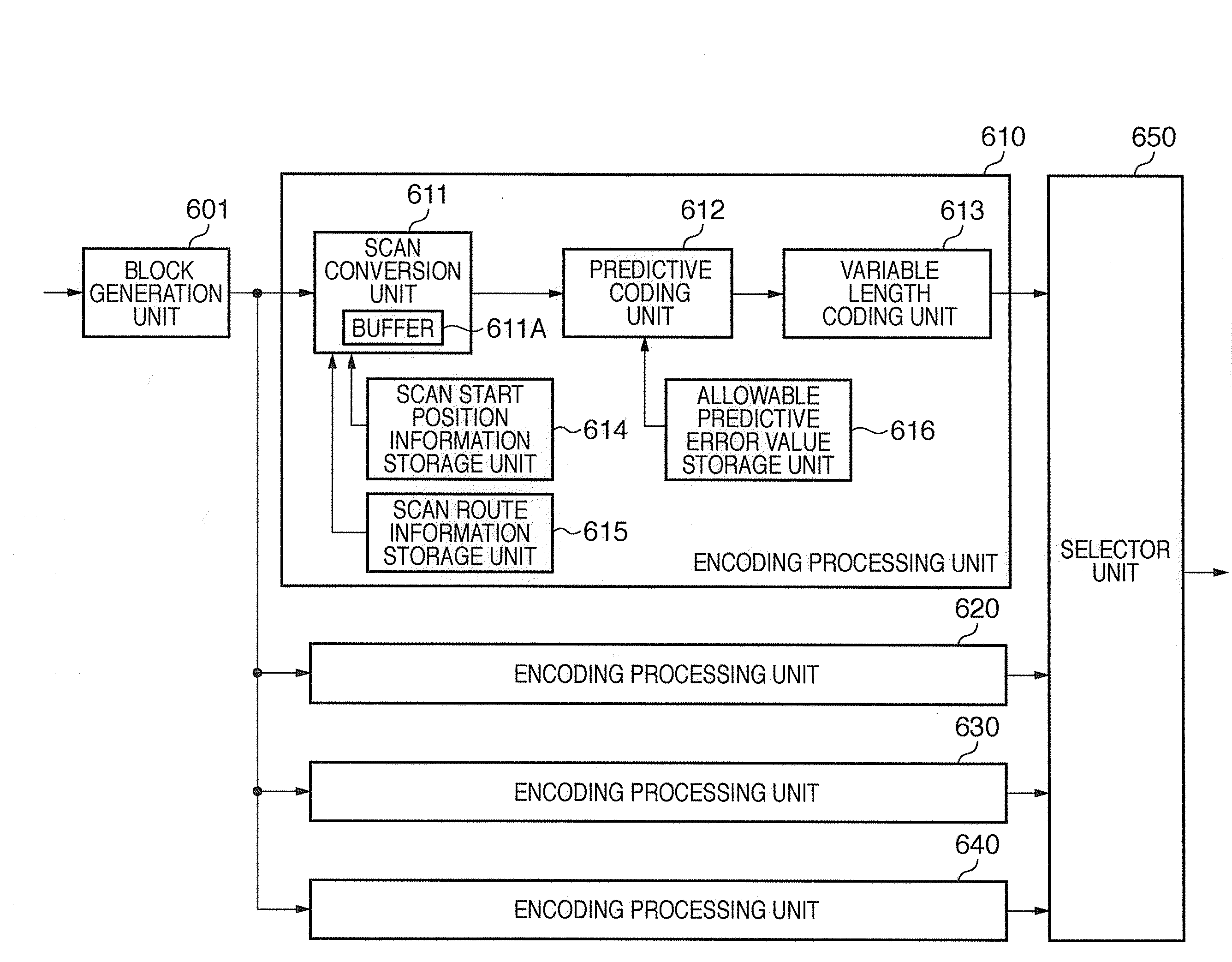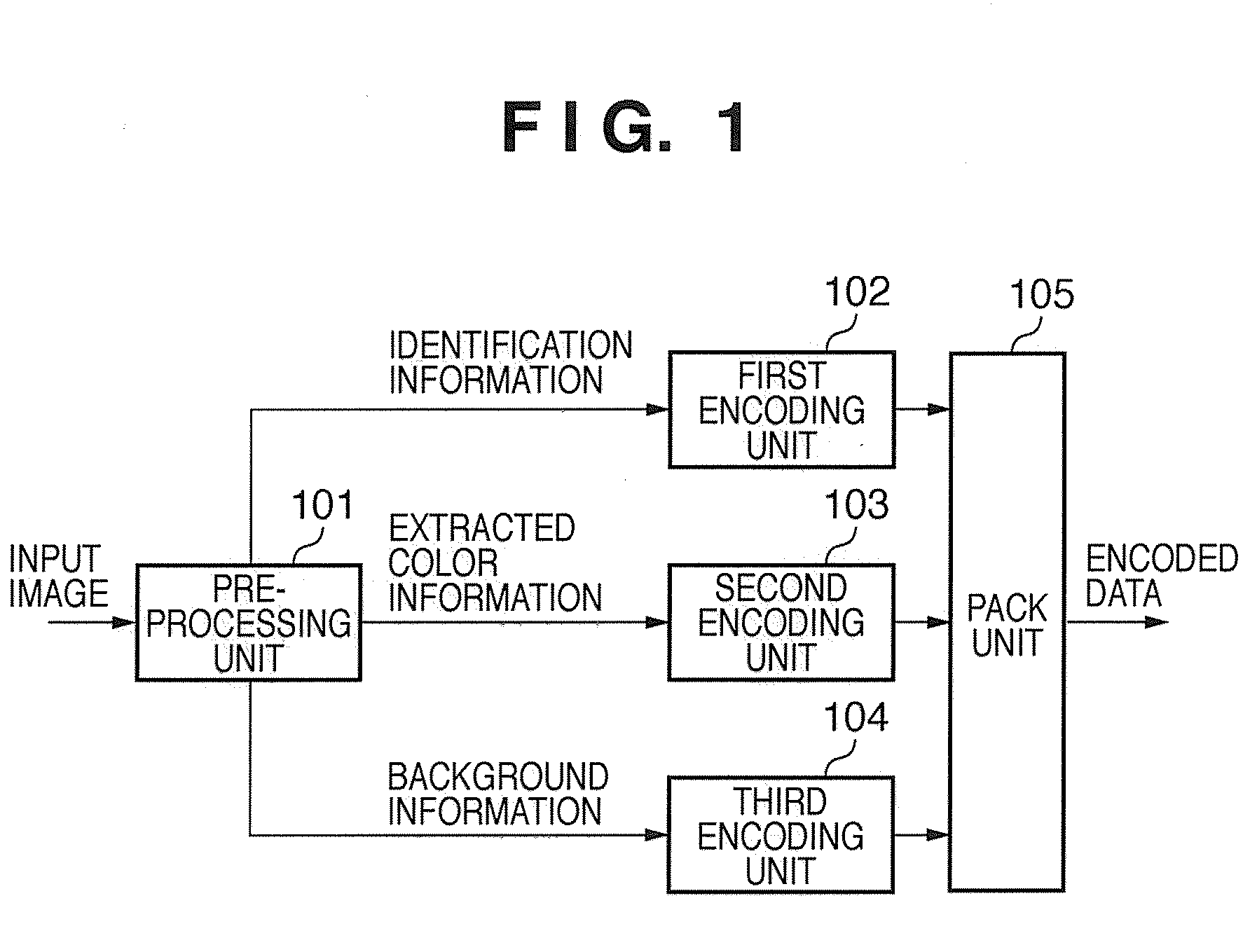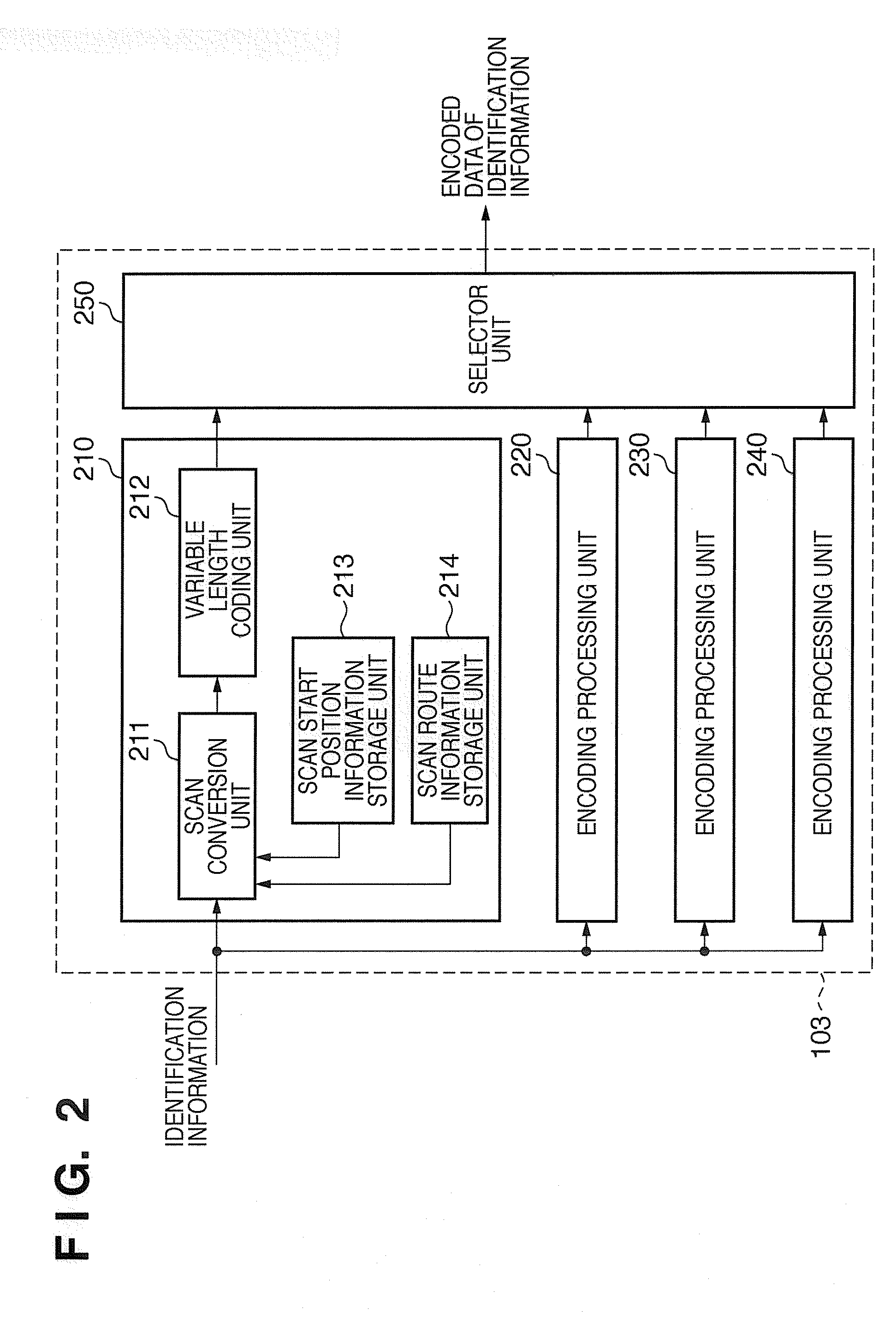Image encoding apparatus and control method thereof
a technology of image encoding and control method, which is applied in the field of image encoding technique, can solve the problems of deteriorating encoding efficiency depending on images, jpeg encoding readily generating mosquito noise, and jpeg encoding readily causing block distortion (block-shaped noise), so as to achieve the effect of greatly reducing the amount of encoded data
- Summary
- Abstract
- Description
- Claims
- Application Information
AI Technical Summary
Benefits of technology
Problems solved by technology
Method used
Image
Examples
first embodiment
[0039]FIG. 6 is a block diagram showing the arrangement of an image encoding apparatus according to the first embodiment.
[0040]A block generation unit 601 inputs image data defined by m×n pixels (to be referred to as image block data hereinafter) from image to be encoded. Assume that the inputting order of image block data is a raster scan order for respective blocks. For the sake of simplicity, an image block has a size of 8×8 pixels in the description of this embodiment. Also, a supply source of image data to be encoded is an image scanner. However, the supply source may be a storage medium which stores that image data, or a rendering unit which generates image data based on print data. Hence, the types of supply sources are not particularly limited.
[0041]The apparatus of this embodiment comprises a plurality of encoding processing units which receive image block data and generate encoded data. In FIG. 6, reference numerals 610, 620, 630, and 640 denote such encoding processing un...
second embodiment
[0074]The second embodiment will be described below. FIG. 1 is a block diagram showing the arrangement of an image encoding apparatus according to the second embodiment.
[0075]Referring to FIG. 1, a pre-processing unit 101 receives image data for respective blocks, and executes a series of processes until an image in each inputted block is separated into an extracted color part and background part (non-extracted color part). In this embodiment, the size of each block is defined by 8×8 pixels. However, the sizes of 16×16 pixels, 32×32 pixels, and the like may be used. In this embodiment, assume that the value of each pixel of inputted image data indicates a density.
[0076]An example of the separation method of an extracted color part and background part will be described below.
[0077]The pre-processing unit 101 calculates an average of densities of all pixel data in a block. The pre-processing unit 101 classifies the densities of the pixel data into a pixel group (to be referred to as a...
third embodiment
[0103]Note that the first embodiment has explained the example using the scan patterns shown in FIGS. 7A to 7D, and the second embodiment has explained the example using the scan patterns shown in FIGS. 3A to 3D. However, the present invention is not limited to these scan patterns. In short, any start positions and scan routes can be set depending on information to be set in scan start information storage units and scan route information storage units.
[0104]For example, scan start positions and scan routes shown in FIGS. 5A to 5D may be adopted.
[0105]FIG. 5A shows an example in which the upper left corner is set as the scan start position, and a zigzag scan is made in the down direction. FIG. 5B shows an example in which the lower left corner is set as the scan start position, and a zigzag scan is made in the right direction. FIG. 5C shows an example in which the lower right corner is set as the scan start position, and a zigzag scan is made in the up direction. FIG. 5D shows an exa...
PUM
 Login to View More
Login to View More Abstract
Description
Claims
Application Information
 Login to View More
Login to View More - R&D
- Intellectual Property
- Life Sciences
- Materials
- Tech Scout
- Unparalleled Data Quality
- Higher Quality Content
- 60% Fewer Hallucinations
Browse by: Latest US Patents, China's latest patents, Technical Efficacy Thesaurus, Application Domain, Technology Topic, Popular Technical Reports.
© 2025 PatSnap. All rights reserved.Legal|Privacy policy|Modern Slavery Act Transparency Statement|Sitemap|About US| Contact US: help@patsnap.com



